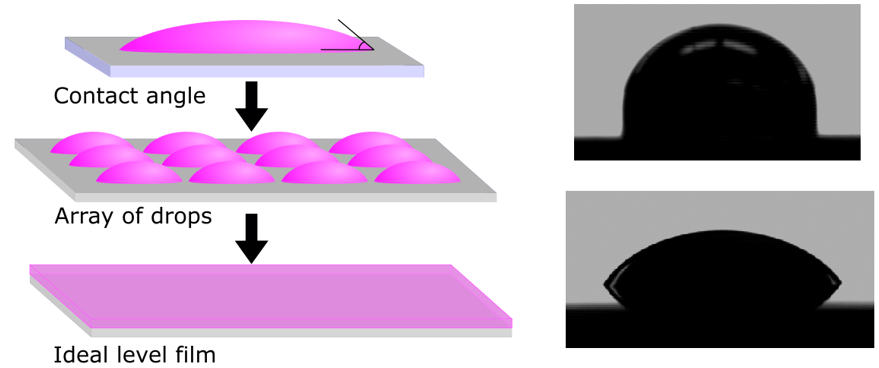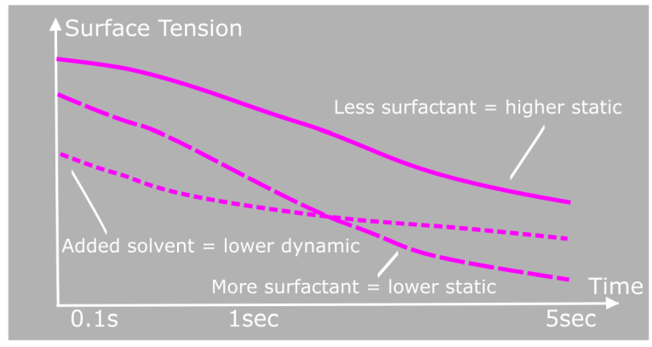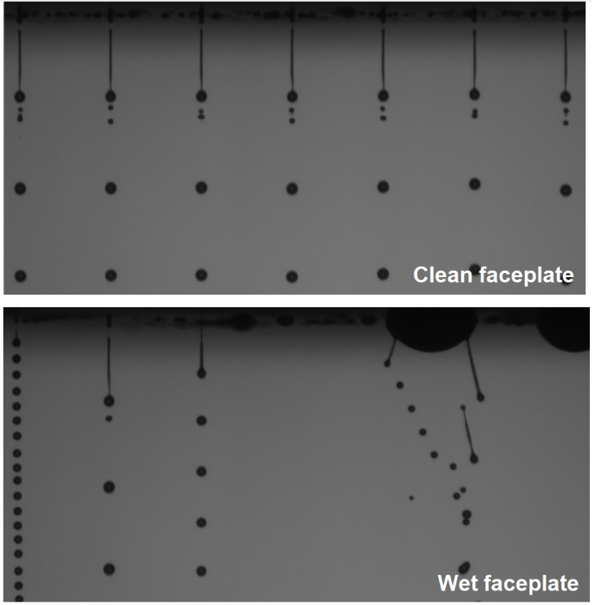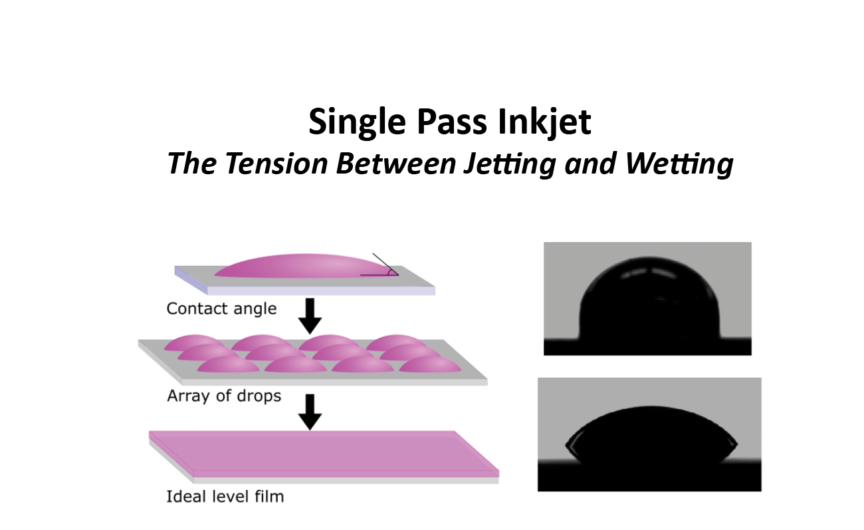Surface tension of an ink is the second most important property you’ll see on ink specs, but there’s a solid reason for that when it comes to printing single-pass. It comes down to the fact that the surface tension requirements of the ink for wetting and for jetting tend to pull in opposite directions.
First, we let’s remind ourselves what surface tension means, and why the dynamic surface tension is so important for printing. Without getting too detailed with equations, the surface tension essentially sets the ability of a liquid to wet out on a solid surface. The lower the surface tension, the higher the variety of surfaces that can be wetted.
The reason that is so important for conventional inkjet is that there is no contact force between the ink and substrate to force the inks to spread. (Note that we say “conventional” here because there has been rise in “offset inkjet” processes in the last 10 years which use a more traditional impression approach to transfer the ink onto the final substrate from an intermediate surface).
Importance of Contact Angle
The challenge in forming a nice film by drop spread alone is demonstrated by the schematic in the image below. The individual dots only become a single layer when each drop spread and merges into its neighbour. This is strongly dependent on the “contact angle”, which is a result of the surface tension and indicated in the two right-hand photos of drops from a laboratory goniometer.

In most inks the surface tension changes with time as a result of the surfactant materials used to modify it. This “dynamic” surface tension is more important for single pass since it determines the time needed to spread before drying or curing can begin. We try to portray this in the “graphs” below showing how surface tension changes with various surfactant additives.
Too see how this influences contact angle with time see M.Bale in Handbook of Industrial Inkjet Printing, 2017. In many production systems using UV inks, for example, this mean moving the UV cure lamp to the right distance to make the most of the ink-substrate interaction but when this is not possible than the ink needs to be tuned to fit the space available.

Surfactant alters surface tension
Surface Tension Affects Ink Behaviour
The “tension” referred to in the title arises from the fact that low surface tension, and specifically low dynamic surface tension can be problematic for print head operation. This is because many print head rely on non-wet coatings to manage the ink behaviour on the nozzle plate (or “faceplate”). If the contact angle on this coating is too low, the nozzle will easily leak ink onto the faceplate causing catastrophic failure. Two examples of this effect can be seen in the photo below, one showing the drops growing on the faceplate using a “drop watcher” and the other a photograph of a head that has failed by wetting.

This is clearly very fluid dependent and compatibility tests, like contact angles measured over time on faceplate coupons, can be used to diagnose and fix issues. Other than surfactants, the type of material that can lead to low surface tension are usually solvents used as penetrant in aqueous inks or as adhesion promoters in UV inks.
Surface Tension is Critical to Print Quality
In theoretical terms, surface tension is also a variable in the ability to jet a drop in the first place. The reason we mention this last is because it has the smallest practical effect in real inks in most print heads. If it is very high, like pure water, for example, then the fluid can be prone to break into smaller drops upon ejection, thus creating satellite drops.
Surface tension of the ink plays a big part of jetting from the head correctly and wetting upon the media surface as mentioned in article Single Pass Inkjet – Going with the Inkjet Flow. Both are critical to accurate drop placement of process and additional expanded gamut colors and post coatings. This accuracy makes the difference for print quality and the final printed product.

